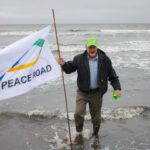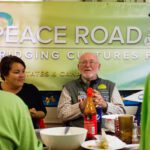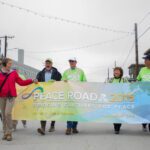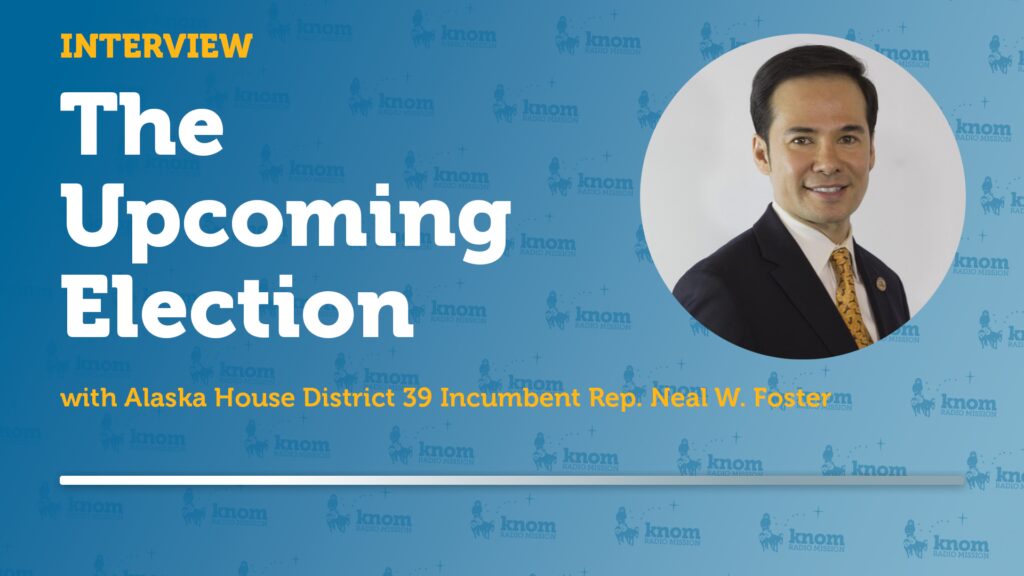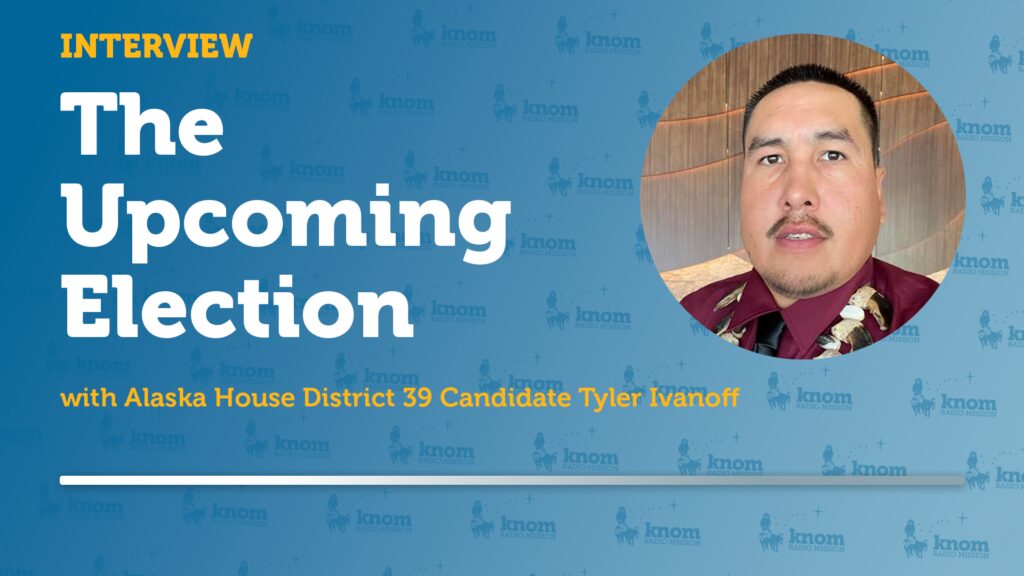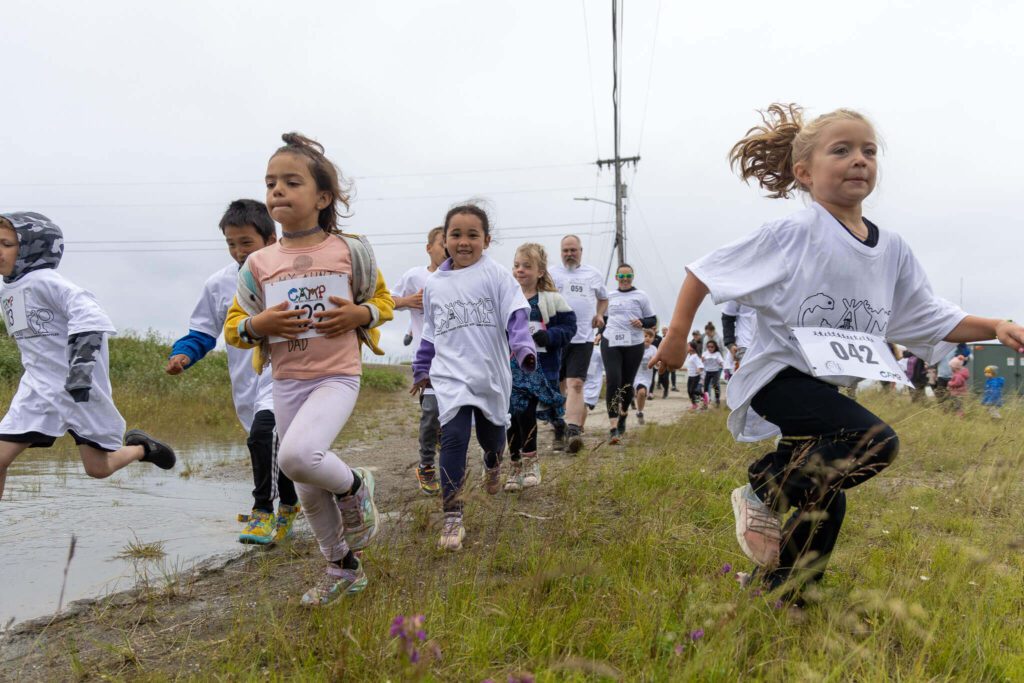At a restaurant in downtown Nome, diners discussed world peace and international relations over pizza and sushi. The hodgepodge group gathered together for the Peace Road Rally, an event organized to increase interest in a tunnel connecting Russia and the U.S. across the Bering Strait.
Religious leader Reverend Sun Myung Moon proposed a Bering Strait tunnel as a tool for world peace to the United Nations in 2005. To commemorate the tenth anniversary of his address, the Family Federation for World Peace and Unification, a religious organization Reverend Moon was affiliated with, organized a series of rallies across the U.S., including stops in Kodiak and Anchorage, culminating at the edge of the Bering Sea.
Michael Balcomb, current president of the Family Federation, explained his lofty goal and large price tag over lunch with a few local residents and city officials. For Balcomb, the 60-mile tunnel is as much about ideals as it is about economics.
“Peace is always cheaper than war,” Balcomb stressed, “if we can find hundreds of billions of dollars for war, we surely can find hundreds of billions for peace.”
But Balcomb acknowledges that it takes a vision to accomplish such a large project, just like it took a vision to build railways across America. “If we can find a way,” Balcomb said, “the funds will follow.”
But finding a way means not just finding the billions, if not, trillions needed to build a Bering Strait tunnel. It also means ensuring peaceful relations worldwide, which, Nome Gold dredger Pete Nagel emphasized will take a lot to achieve.
“I think each of our nations, Russia and the U.S., have to overcome our respective military industrial complex,” Nagel said, “and then we can go ahead and achieve the goal of international unity.”
Although the group was shy on the details about how to overcome the financial and political obstacles, Nome’s outgoing City Manager Josie Bahnke, focused on how the project would specifically benefit western Alaska. “The city of Nome has been advocating for a western access route for many, many years so this is a natural fit for us,” Bahnke explained. “It’s not anything that we have the funding for, but certainly something that we’ll continue to advocate for.”
While Bahnke went back to the office, the five remaining peace marchers headed down Front Street, sporting their lime green t-shirts and peace road banner. After a short march that did little to attract attention or impede traffic, the group clambered down Nome’s rocky seawall. The only Nomemite in attendance and therefore the only one in Xtratufs, Nagel waded into the sea to plant the peace flag. The photo-op was a quick one, as the waves forced Nagel back on shore.
With the brief but spirited march over and the visiting peace marchers discussing their evening flight out of Nome, reality seemed to sink in. Still holding onto the peace road banner, Eugene Harnett, the CEO of a smartphone marketing company based in Anchorage and the rally’s Alaska host, reflected on the barriers to such a massive undertaking.
“Realistically, you need an economic feasibility study, you need to get all the permitting done, there’s a lot of technological work that needs to be done,” Harnett said, “but that’s going to take money, a lot of money.”
Whether or not the money for the tunnel will ever surface or the relationship between Russia and the U.S. will allow for such a collaborative project across the strait is unclear. In the mean time, the peace road ralliers say they’ll be back to Alaska- and Nome- next year in the hope of moving their goal for thousands of miles of new roads and tunnels forward inch by inch.





